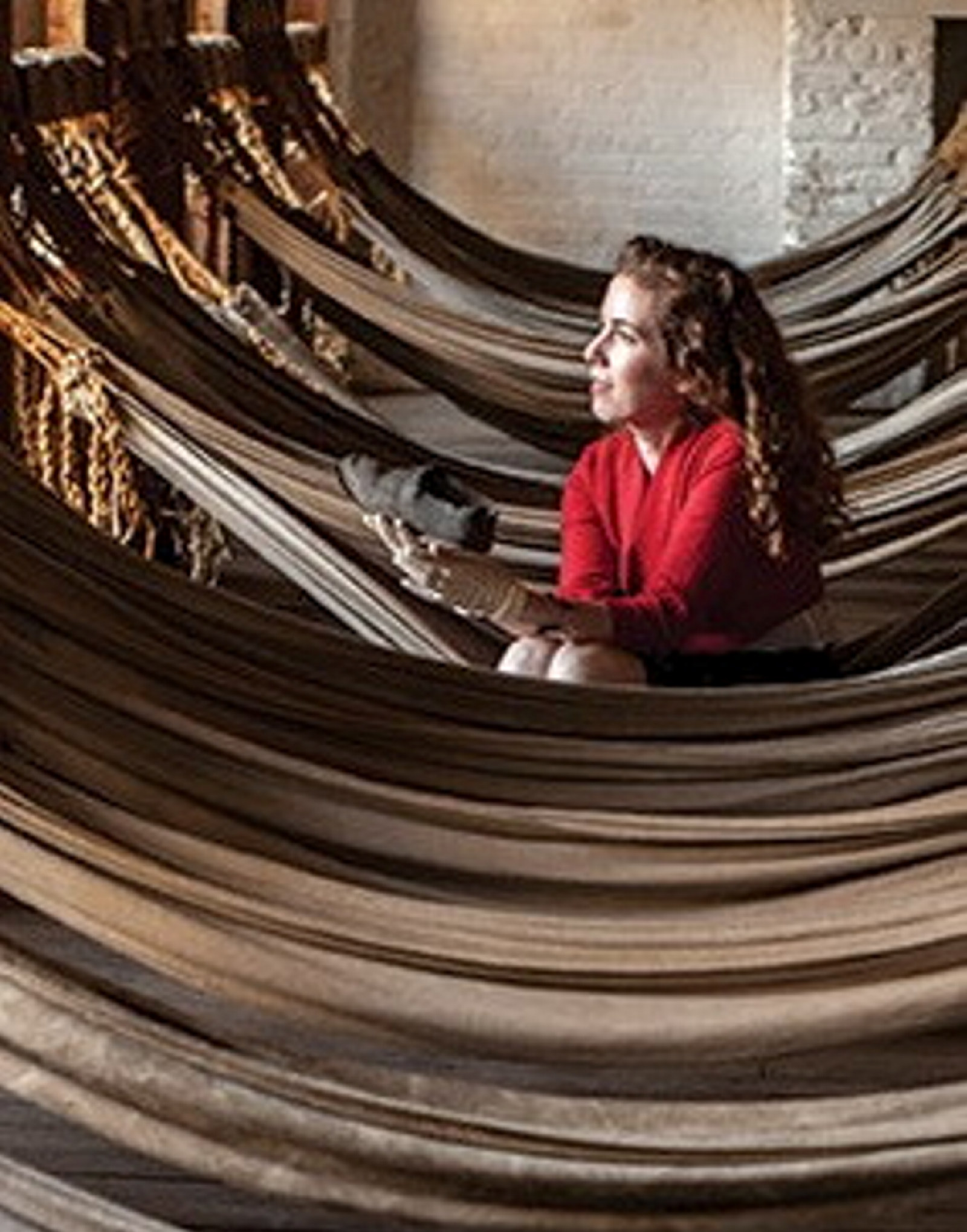A short history of the Hyde Park Barracks
Standing proudly at the southern end of Sydney’s Macquarie Street, the Hyde Park Barracks is an imposing yet restrained building with a chequered past.
Perhaps the most significant survivor from Australia’s colonial period, this place has witnessed the development of Sydney – from convict beginnings and free migration to landmark legal decisions and heritage debates. From its opening in 1819 until the late 20th century, the barracks provided accommodation for convicts, female immigrants and aged and destitute women, and later housed courtrooms and government offices as a legal and administrative hub.
As the centre of the colonial convict administration and a crossroads for tens of thousands of convicts, Hyde Park Barracks is recognised as one of the world’s most important cultural heritage places, inscribed on UNESCO’s World Heritage list along with 10 other key convict sites around Australia. This listing acknowledges the key role the barracks played in the British Empire’s forced migration of people around the world, an unprecedented event in human history.
Simple and handsome
Commissioned by Governor Lachlan Macquarie and built with convict labour, Hyde Park Barracks was the first convict barracks in the colony. Previously, convicts had been allowed to find their own accommodation, but by housing them in a barracks Macquarie hoped to increase their productivity and improve their moral character. The three-storey building with massive shingled roof and a simple yet striking façade was designed by convict architect Francis Greenway. So impressed was Macquarie with this design that he granted Greenway a full pardon.
The style of architecture, in which the body of this building has been designed, is simple and handsome, and the execution of the work is solid and promises to be durable.
Commissioner John Bigge, 1822
Convict life
The convicts living at the barracks were controlled by a delicate balance of freedom and restraint: they were prisoners, but the barracks was not a prison. Convicts arriving in Sydney Cove were marched up the hill to the barracks. After being mustered in the yard, some were quickly assigned to work for colonists, while those with useful trades were kept in government service and lived at the barracks. These convicts were required to work for the government during the week but were allowed to work for their own benefit on Saturdays. In 1830 a Court of General Sessions was established in the buildings along the northern perimeter of the site, turning the complex into a busy administrative hub for the colonial convict system. Here convicts from around the colony faced trial for secondary offences and disputes between convicts and employers were settled. Fortunate convicts were presented with pardons and tickets of leave, but disobedience and small misdemeanors were punished with solitary confinement or flogging on site. More serious crimes meant a longer sentence, months of work in a chain gang, or banishment to the dreaded penal stations of Norfolk Island or Port Arthur.
Convict Sydney
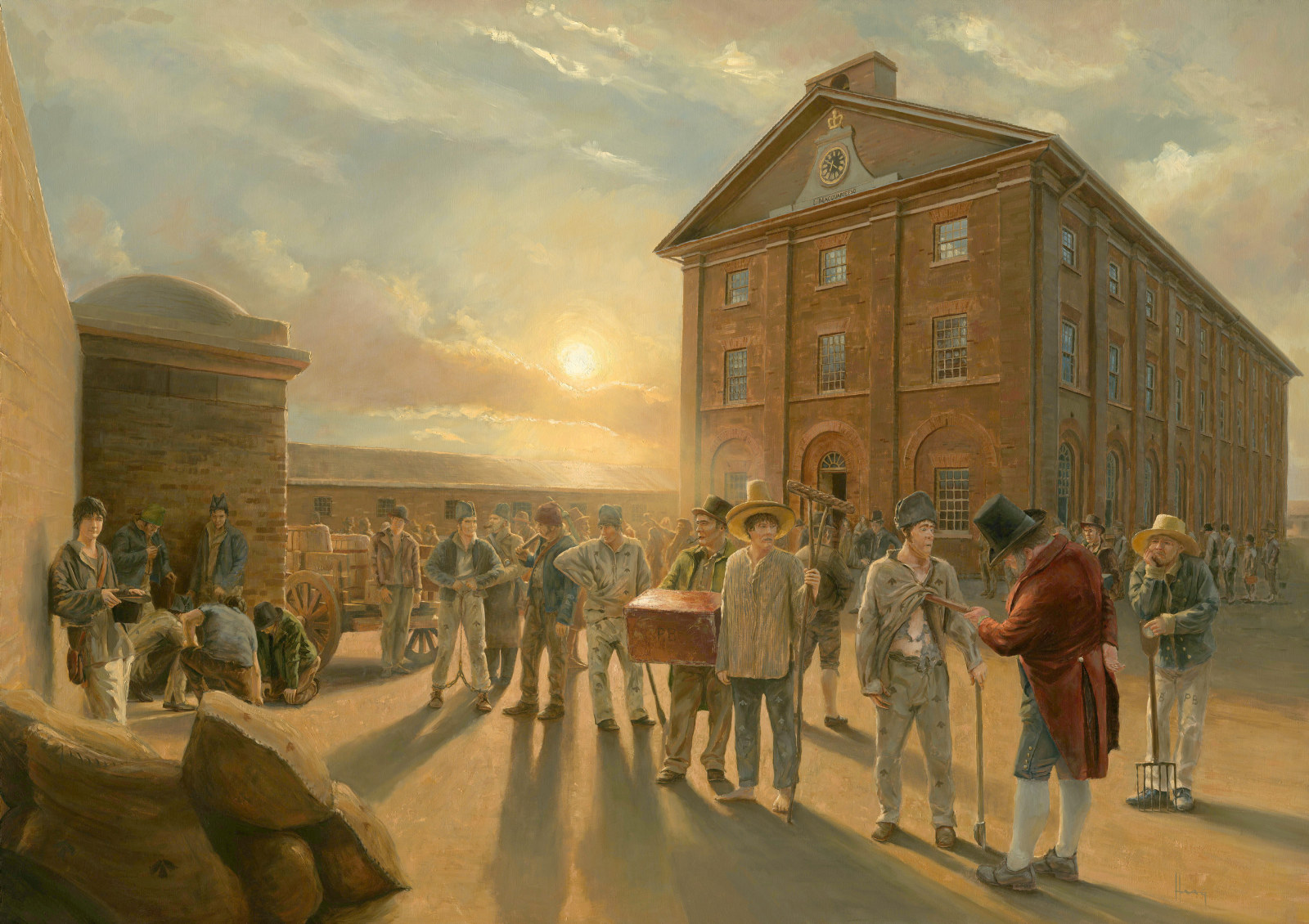
Convict Sydney
Convict Sydney
From a struggling convict encampment to a thriving Pacific seaport, a city takes shape.
The yard was filled with a dense mass of moving forms, of every variety of face and figure. The barrack, indeed, at that period might truly have been assimilated to the box of Pandora, for it certainly contained every evil in human shape – a perfect accumulation of vice and infamy...
Charles Cozens, Adventures of a guardsman, Richard Bentley, London, 1848, p116.
The first convicts moved into Hyde Park Barracks in May 1819. Designed to house 600 men, over the next few decades there were times when as many as 1400 men lived here. Sleeping in hammocks strung up two rows per room, they endured regimented days of endless rules and routines punctuated by the ringing of the yard bell. And they were a diverse and motley crew. Along with pickpockets, petty thieves and tricksters were political protesters and conspirators, machine breakers, bank robbers, pirates and slaves, bushrangers and hardened repeat offenders. Most had a useful trade, a craft or a profession, from baking to boatbuilding, shoemaking to writing. Many soon gained their freedom through hard work and obedience, but others remained outside the law. A few barracks convicts achieved fame or notoriety, including, along with architect Francis Greenway, poet Francis Macnamara, bushrangers Lawrence Kavanagh and William Westwood, murderer John Knatchbull, Khoi chief David Stuurman, writer Thomas Cook, potter John Moreton and hangman Alexander Green.
Women for the colony
The transport of convicts to NSW ended in 1840, leaving in its wake a huge gender imbalance. In 1848 the few remaining convicts still housed at the barracks were transferred to Cockatoo Island in Sydney Harbour, and the barracks was converted into a Female Immigration Depot. Over the next four years, over 2000 orphan girls from the crowed workhouses of famine-plagued Ireland were housed at the barracks. Government-assisted passage schemes continued over the next four decades bringing thousands of other ‘unprotected females’ to the colony – the wives and children of convicts, women and girls from the workhouses of Britain, and other young women seeking new prospects. On arriving in Sydney, they were lodged at the depot until they were reunited with their families or their services hired out from the ground floor of the main (dormitory) building.
There had assembled outside the door about 200 ladies in want of servants, and when 12 o’clock came around the rush made by the fair employers for ‘fust pick’ was so eager so at once to suggest … the practically unlimited demand which exists for their help
Hiring the Immigrant Girls’, Australian Town and Country Journal, 19 July 1879, p120.
During the mid to late 19th century, the perimeter buildings were taken over by various government agencies, including the Government Printing Office, the City Coroner and the Vaccine Institute, which provided smallpox inoculations to the colony. By 1862 the top floor of the main building was converted into an asylum, providing care and lodgings for aged, destitute, terminally ill and mentally ill women, who lived out the rest of their days here. The manager of the Immigration Depot, Matron Lucy Hicks, also took on the management of Hyde Park Asylum and she lived with her family on the second floor.
Irritatingly bad buildings
By the 1880s overcrowding was a constant problem and in 1886 Hyde Park Asylum closed. After the women were moved to the newly built Newington Asylum near Auburn, the District Court, which already occupied the perimeter buildings, expanded into the central building. By the following year the barracks, renamed Chancery Square, was a bustling complex of courts and government offices. The expansive dormitory rooms were subdivided into a labyrinth of offices and the courtyard filled with additional fibro buildings for courts and the offices of numerous government agencies, including the Supreme Court Judges, Master in Lunacy Court and Offices, Bankruptcy Court, Clerk of the Peace, Probate Court and Offices, NSW Registrar & Commonwealth Conciliation and Arbitration Court, and Industrial Arbitration Court. Two landmark legal decisions were made at the site: in 1927 the basic living wage was approved, and in 1921 a case for equal pay for women was presented and rejected, but not granted until 1973.
A conglomerate mass of irritatingly bad buildings which have completely destroyed the essential dignity of Greenway’s plan.
architect and historian Mortan Herman, 1954
Rediscovery & recognition
During the 20th century, Hyde Park Barracks escaped demolition a number of times. In the early decades it was under threat by plans to develop Macquarie Street, but this period also saw the beginnings of the heritage preservation movement, with artists such as Sydney Ure Smith, Lionel Lindsay and Hardy Wilson picturing the barracks and other heritage buildings in their works and speaking openly about the need to preserve them. By the 1940s the Royal Australian Historical Society and the National Trust demanded the barracks be converted into a museum.
It was not until 1975 that extensive conservation works began, and the main building was restored to its original appearance. When workers began to discover relics from the convict period in the cracks and corners of the building, archaeologists were called in to investigate. About 100,000 personal and sometimes precious fragments were then recovered from beneath the floorboards – items which had been left behind or stashed for safekeeping by convicts, women and court workers. Much of this material had been pulled under the floorboards by the rats that infested the building through most of its history, scurrying, stealing and collecting rubbish to make their nests. This collection, which reveals so much about how these men and women lived, still comprises one of the most significant archaeological collections in Australia, and is a unique archive of 19th-century textiles and institutional life.
Archaeology at Hyde Park Barracks
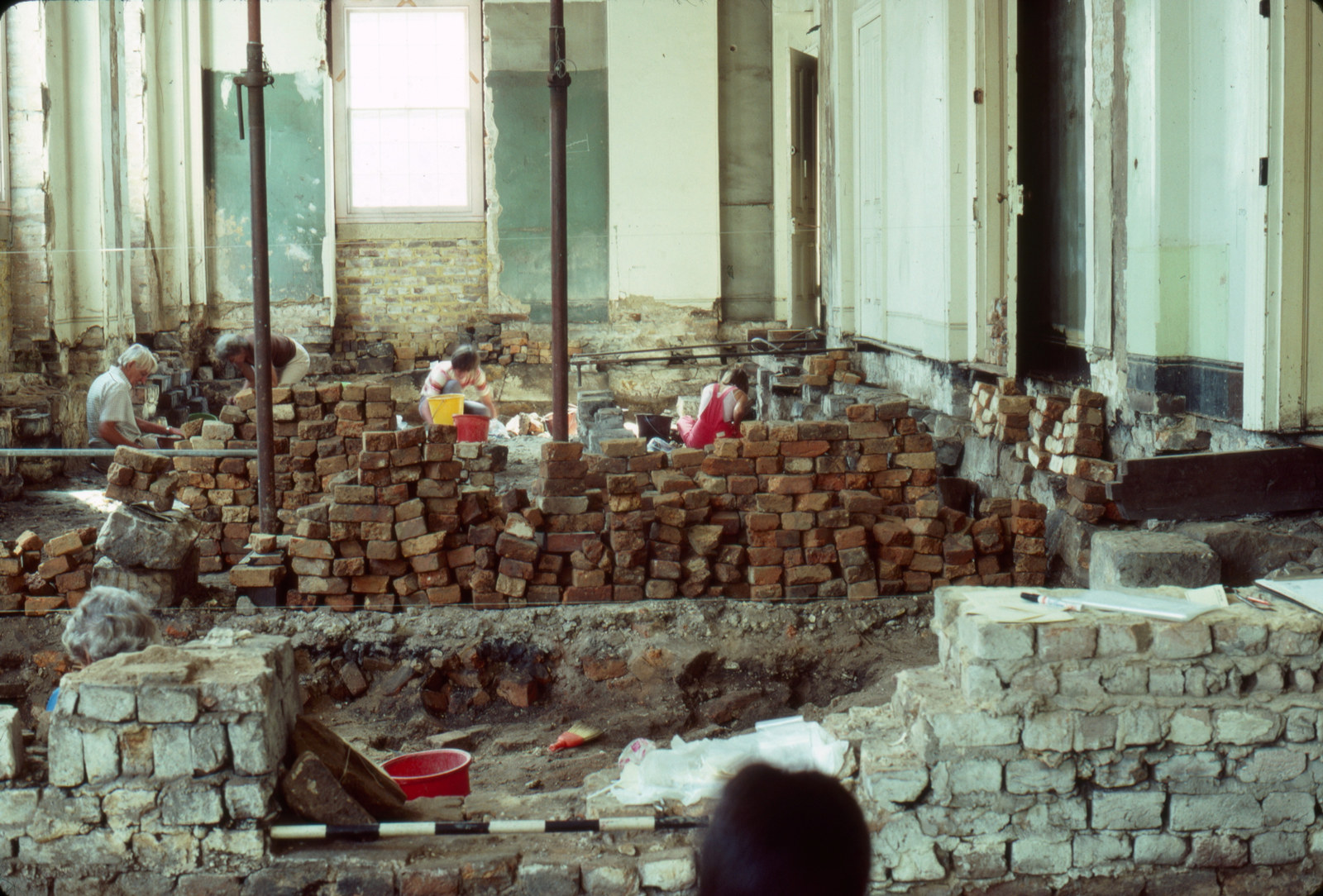
Archaeology in action: Hyde Park Barracks
Occupied continuously by government institutions throughout its history and with over 100,000 individuals passing through, Hyde Park Barracks has a rich archaeological record
Today, the warmth of the sandstock bricks and calm courtyard invite us in from the street, but almost belie the often brutal history of the place. Inside the museum, displays, artefacts and stories reveal intimate and fascinating snapshots from the lives of the tens of thousands of people who have lived and worked there. Dormitories filled with hammocks, soundscapes and the chiming clock take you back to the time when the building was crammed full with convicts, while original doorways, limewashed bricks, floorboards, roof timbers, paint and plaster show the original character and layers of adaptation in each space. Searchable databases reveal the names and identities of some of the barracks inmates which for decades remained anonymous, buried in the archives. The troubled lives of Irish convicts, orphan girls and immigrants are commemorated in the Australian Monument to the Great Irish Famine, along the southern wall of the museum.
Hyde Park Barracks shaped the lives of many thousands who, whether by choice or force, journeyed across the world to this place of transition, where they awaited an uncertain future. Not only for the multitudes of descendants who are drawn here today to reflect on the lives of their ancestors, but for all of us, the barracks is a treasured survivor of Australia’s colonial past. A visit to the barracks museum is an encounter with fascinating lives and a journey through extraordinary times.
[demolition of] The Hyde Park Barracks … would be a sad loss to the city. Not only are their historical associations considerable, but they are also well worth retaining for their architectural merit, a perfect harmonious counterpart to St James Church across the square
Sydney Morning Herald 3 July 1946
Published on
Related
Browse all![Government Printing Office; NRS 4481, Glass negatives. NRS-4481-4-44-[AF00194836] Immigration Barracks Sydney, August 1871 [Department of Public Works]](https://images.mhnsw.au/fotoweb/embed/2024/03/b437216ff79d433da2d3b92c8bb24e51.jpg)
Conservation
Conservation in action: Hyde Park Barracks northern range refurbishment works
In collaboration with experienced heritage consultants and traditional tradespeople, MHNSW is undertaking conservation works to the northern range buildings
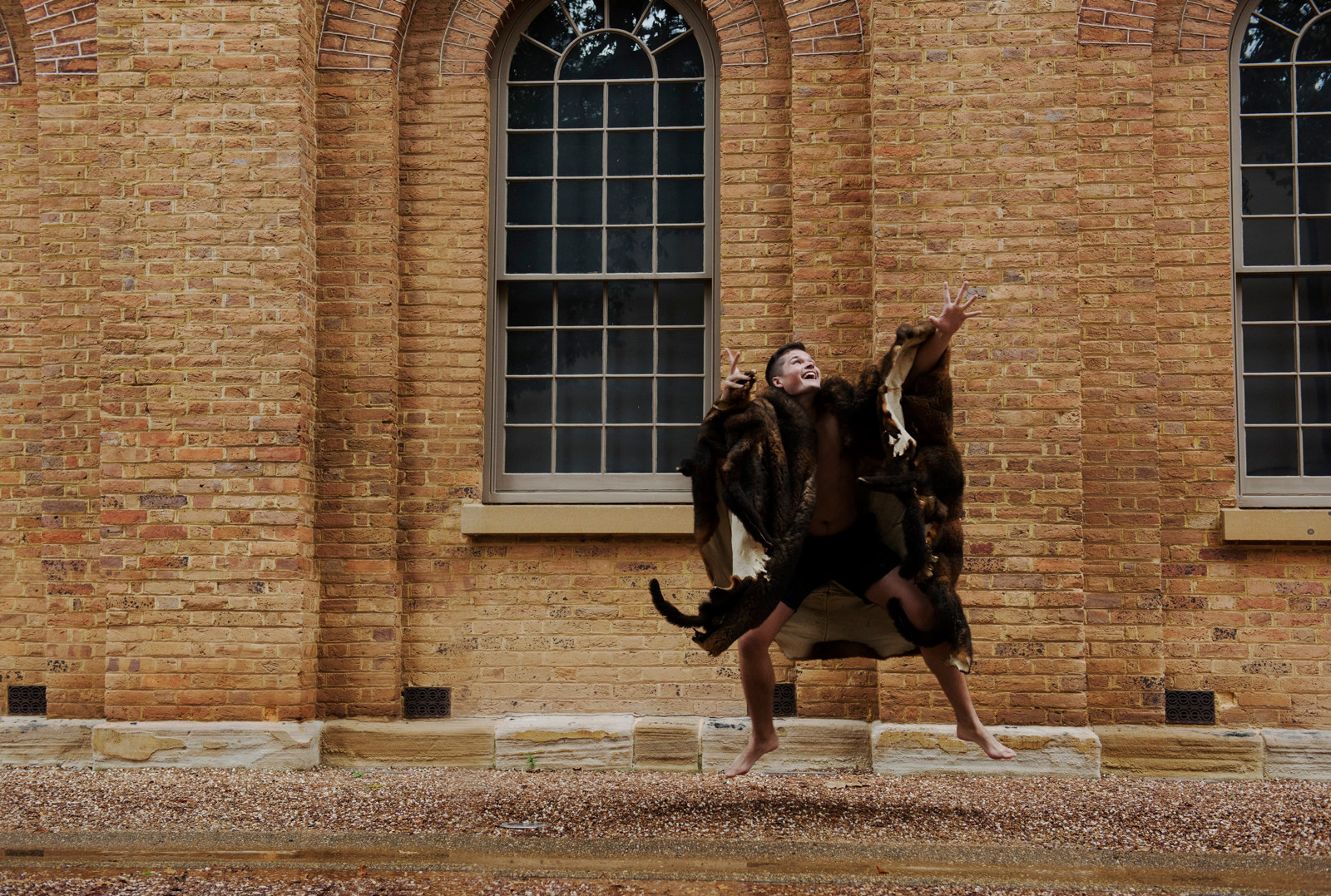
Cutter and Coota: a children’s play by Bruce Pascoe
Meet author and historian Bruce Pascoe and the main characters from his play Cutter and Coota as they reflect on the play’s themes and the experience of performing at the Hyde Park Barracks
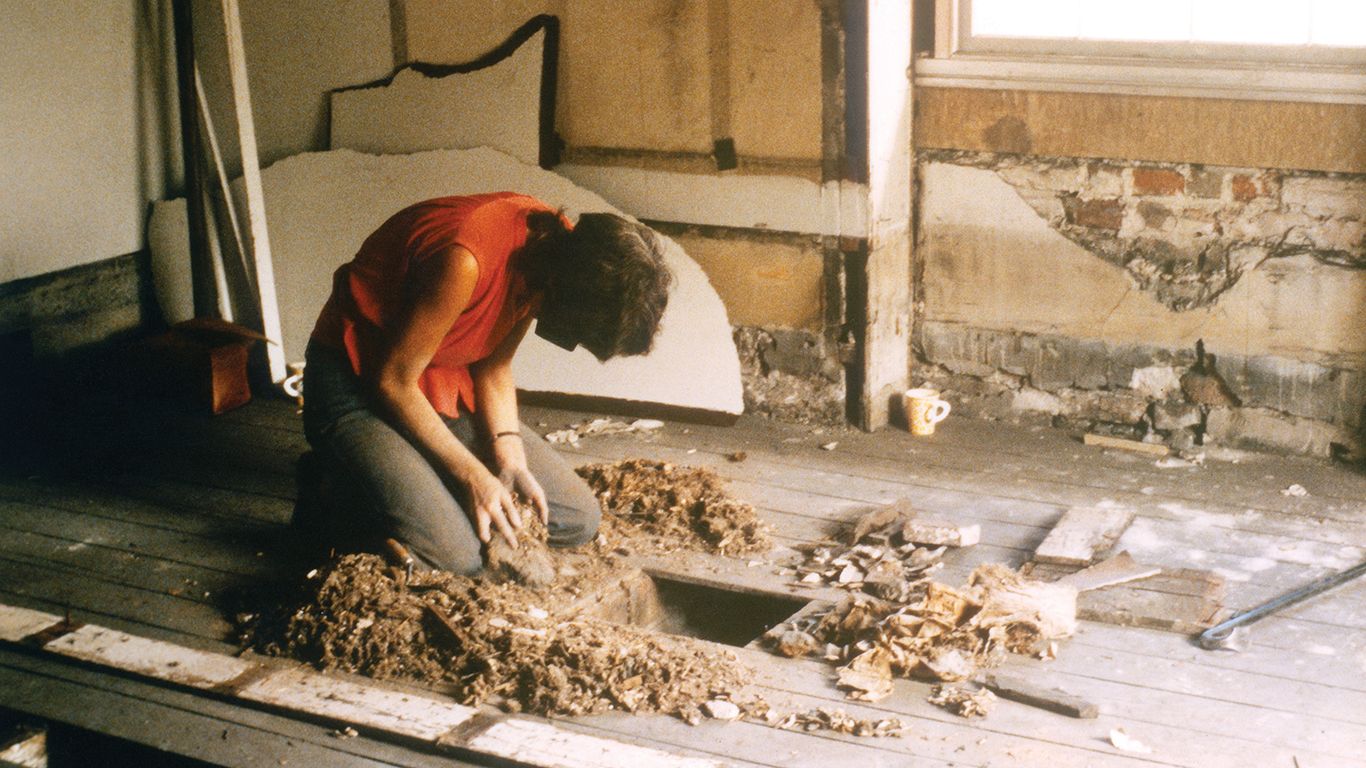
Hyde Park Barracks: a keeper of lost things
Uncover and explore some of the items found inside the barracks
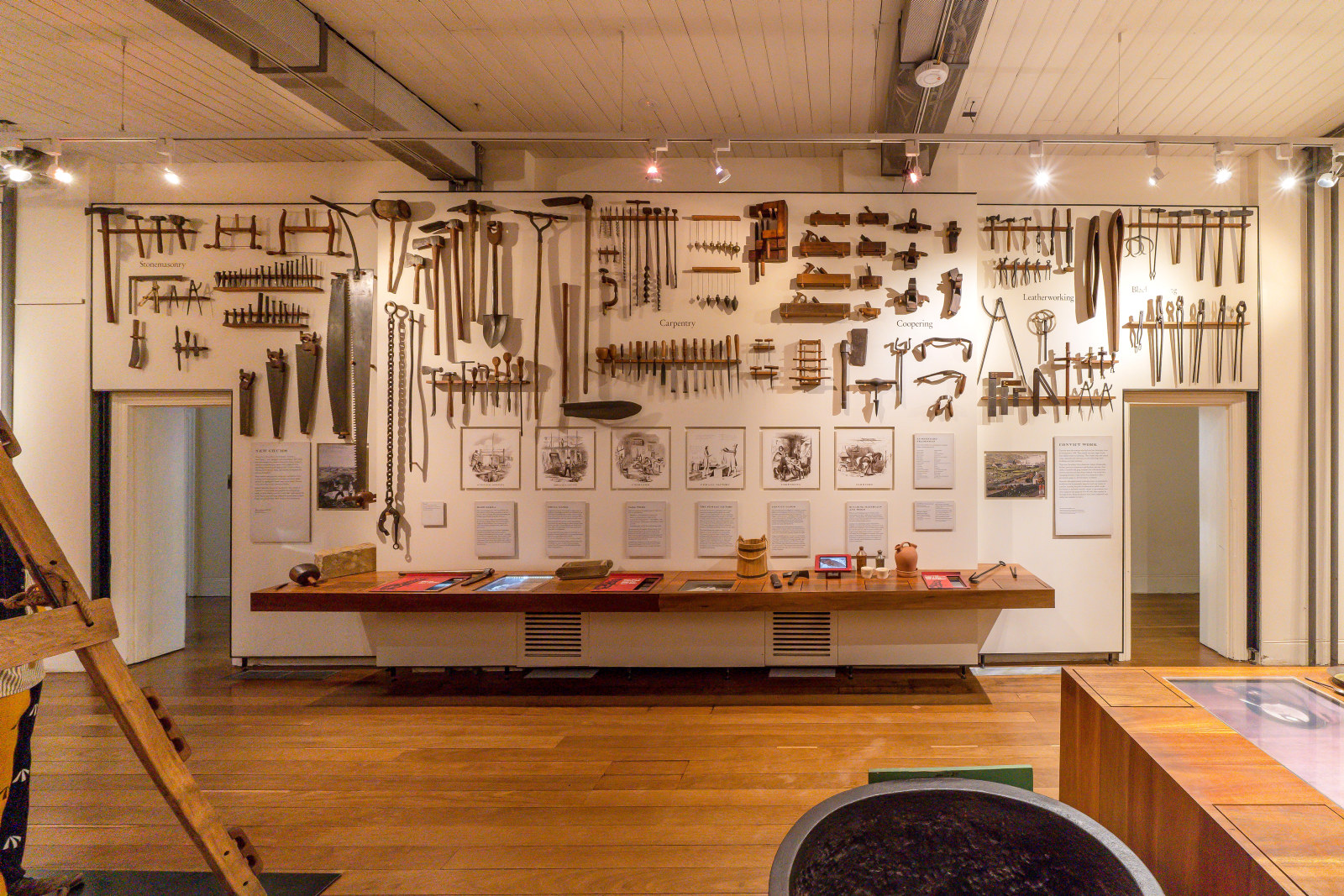
Convict Sydney
Objects
These convict-era objects and archaeological artefacts found at Hyde Park Barracks and The Mint (Rum Hospital) are among the rarest and most personal artefacts to have survived from Australia’s early convict period
